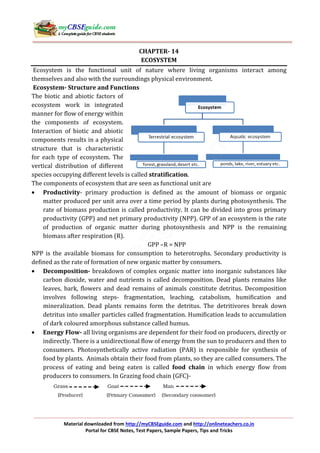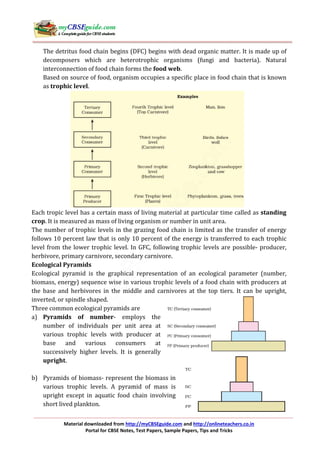This document discusses key concepts in ecosystems, including:
1) An ecosystem is the interaction between living organisms and their physical environment, where biotic and abiotic factors work together for energy flow.
2) Ecosystems have components like primary productivity, decomposition, and nutrient cycling that are essential for energy and matter transfer.
3) Energy flows through food chains and food webs from producers to consumers in trophic levels, which can be represented by ecological pyramids.
4) Ecological succession over time leads to climax communities, and nutrient cycling recycles important elements between biotic and abiotic components.



